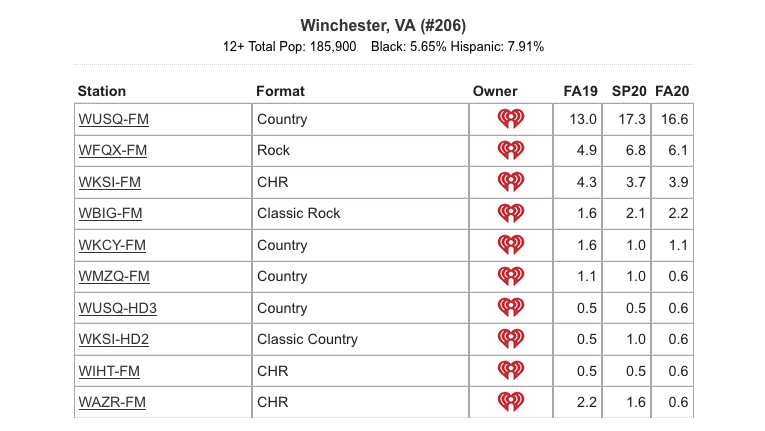While I was traveling through Atlantic Canada in July, this news story broke in Radio World:
“iHeartMedia’s plan to use Veritone’s voice-cloning technology for its podcast platform has some radio industry observers asking the obvious questions: How good does it sound and is broadcast radio far behind?
The largest radio company in the United States says that for now, the synthetic voice solution will only be used to translate podcasts from English to other languages for use on the iHeartPodcast Network, first for Spanish-speaking audiences. But Veritone officials confirm its technology could someday be used for advertising to reduce time-to-market and production costs for radio.”
You can read the complete article here: https://www.radioworld.com/news-and-business/headlines/veritone-synthetic-voice-gets-an-audition
It reminded me of an article I wrote on this very subject in December 2021. I thought readers might find my article of more interest now that the deployment of this technology is happening at warp speed.
Is it Live, or is it Memorex?
I remember when the audio quality of tape recorders became so improved with audio reproduction, that the question of the day was, “Is it live or is it Memorex?” Memorex was a company established in 1961 for selling magnetic computer tapes. In the 70s Memorex moved into producing quality audio tape for recording music and voice.
TV commercials at that time featured Ella Fitzgerald singing a note that shattered a glass, while simultaneously being recorded on an audio cassette. The recorded audio would then be played back and the recording would also shatter a glass, to which the announcer would ask, “Is it live, or is it Memorex?”
Is AI Going to Replace Voicetracking?
Then Radio Ink published a story that got many of the people in my radio, podcasting and other social media groups talking about, titled “Is AI going to replace voicetracking?”
Voicetracking technology has been used to replace live radio personalities for decades, but what AI presents the industry with is the possible ability to bring back the big name radio personalities.
Dan Ingram, Larry Lujack, Robert W. Morgan, The Real Don Steele…
Imagine your radio market’s favorite radio personality returning to the airwaves. It’s not out of the realm of possibility.
A company called WellSaid Labs has created dozens of human voice avatars where all one needs to do to get them to talk, is type text into a computer and the voice will say it.
Imagine how having a creative person, who has studied the style of an iconic personality, and then creating new, contemporary material to be delivered in that personality’s voice might sound.
Netflix Research
Now you might be wondering why anyone would want this type of technology. Well, Netflix now streams content worldwide and buys new content from producers all over the world. Much of that content is produced in the country’s native language and so Netflix has to show that content with either subtitles or voice-dubbing the dialog with voice actors speaking in the language of the country the material will air in.
It might not surprise you to learn that when Netflix has offered viewers two ways of viewing a program, Americans in particular, prefer voice-dubbing to subtitles. (I know I do.)
To speed up the process of voice-dubbing and to have voices that sound the same as the original actors, companies like WellSaid are developing artificial intelligence technology that by voice sampling can then re-create the voice automatically.
ALEXA
I already have conversations with Alexa and have wondered what she might sound like as a DJ on a radio station, haven’t you?
The afternoon DJ on KCSN, Andy Chanley, has been on-the-air there for over 32 years. Now using a robot DJ named ANDY (Artificial Neural Disk-Jockey), Chanley’s voice will continue to be heard in many places throughout Southern California. During a demonstration for Reuters, reporters say that Chanley’s AI voice was hard to distinguish from his human voice.
You can listen to these computer generated voices WellSaid has created for yourself by clicking on this link: https://wellsaidlabs.com/?#actors-preview-list
Is Your Favorite DJ Already a Robot?
WellSaid says its voice avatars are doing more than just DJ work, they are being used extensively in corporate training material and the creation of audio books.
Do I think I will live to see radio’s great personalities coming back to life? No, because I think there will be too many legal issues that might complicate that from happening anytime soon.
But I do think that original voice avatars, teamed up with creative content developers, might just come into existence sooner than we imagine and provide us with an entirely new form of radio entertainment.
(This article was originally published on December 19, 2021)






 Bill Thomas, a media and branding idea expert and broadcast & radio veteran (@BillThomas), shared a link on Twitter to an Ad Week
Bill Thomas, a media and branding idea expert and broadcast & radio veteran (@BillThomas), shared a link on Twitter to an Ad Week  it’s been illuminating learning about our city and the way it operates. The other evening, we had a session with the city’s Emergency Management and E-911 departments.
it’s been illuminating learning about our city and the way it operates. The other evening, we had a session with the city’s Emergency Management and E-911 departments.



 I was reading an article in Medium about “
I was reading an article in Medium about “
 Christopher Comstock, aka “Marshmello,” signed with the Palms Casino Resort in Las Vegas taking up residency at their Kaos Dayclub and Nightclub.
Christopher Comstock, aka “Marshmello,” signed with the Palms Casino Resort in Las Vegas taking up residency at their Kaos Dayclub and Nightclub.
 with them, touching their hands. In fact, the host said, when Brucie showed up at NBC4 to do the
with them, touching their hands. In fact, the host said, when Brucie showed up at NBC4 to do the  For many of you, this past week has been a very stressful one. The world’s largest radio owner/operator, iHeartMedia, announced a countrywide Reduction In Force or RIFs. However, reading an
For many of you, this past week has been a very stressful one. The world’s largest radio owner/operator, iHeartMedia, announced a countrywide Reduction In Force or RIFs. However, reading an  Remember when the rock group, The Buggles, introduced a new cable TV channel, MTV (Music Television) with the song “
Remember when the rock group, The Buggles, introduced a new cable TV channel, MTV (Music Television) with the song “ Radio used to really promote its greatest asset, its radio talent. WHDH in Boston promoted itself as having “New England’s Finest Radio Entertainment 24 Hours Every Day!” The “Big 5 on 85” print ad featured Jess Cain, Fred B. Cole, Hank Forbes, Bob Clayton and Norm Nathan, as their air staff, and never mentions what kind of music they play, or news they featured or anything else the radio station did. WHDH was not alone in doing this. Every radio station promoted its talent line-up. Radio air talent WAS the reason people listened.
Radio used to really promote its greatest asset, its radio talent. WHDH in Boston promoted itself as having “New England’s Finest Radio Entertainment 24 Hours Every Day!” The “Big 5 on 85” print ad featured Jess Cain, Fred B. Cole, Hank Forbes, Bob Clayton and Norm Nathan, as their air staff, and never mentions what kind of music they play, or news they featured or anything else the radio station did. WHDH was not alone in doing this. Every radio station promoted its talent line-up. Radio air talent WAS the reason people listened.
 Sue and I just returned from an eight-week, 11,175-mile cross country road trip across America traveling through 23-states. Seeing America from the car has been a Bucket List item for both of us. Our jobs have had us seeing this great land from the air; mine as a radio manager and educator/consultant, and Sue’s as a flight attendant.
Sue and I just returned from an eight-week, 11,175-mile cross country road trip across America traveling through 23-states. Seeing America from the car has been a Bucket List item for both of us. Our jobs have had us seeing this great land from the air; mine as a radio manager and educator/consultant, and Sue’s as a flight attendant.

 Everything old is new again. I’m sure you’ve heard the phrase. “Everything old is new again” was the title of a song in the movie musical “All That Jazz.” Part of the lyrics to this Peter Allen/Carole Bayer Sager song include:
Everything old is new again. I’m sure you’ve heard the phrase. “Everything old is new again” was the title of a song in the movie musical “All That Jazz.” Part of the lyrics to this Peter Allen/Carole Bayer Sager song include: Radio has been here many times in it’s almost 100-year history before.
Radio has been here many times in it’s almost 100-year history before. Have you ever heard of the MAYA Principle? Neither had I. But I saw an article in The Atlantic titled “
Have you ever heard of the MAYA Principle? Neither had I. But I saw an article in The Atlantic titled “